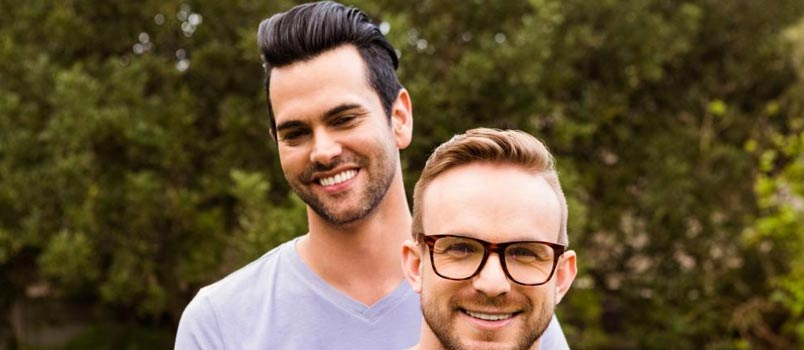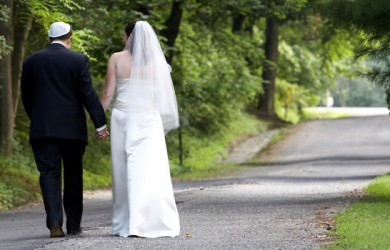Timeline of Legalization of Same-Sex Marriage in the U.S.

Unlock Daily 30-Sec Tips for a Happier Relationship
👉 Subscribe FREEKey Takeaways
Marriage.com AI Quick Summary
The more time goes by, the less and less we hear about gay marriages, which I’m happy about.
It’s not that I don’t believe gay people should be able to get married; my annoyance stems from why it’s even an issue in the first place.
Gay or straight, love is love. Marriage is founded in love, so why should we care if two people who have the same sex want to marry each other?
If marriage was as “sacred” as the opposers will claim it is, the divorce rate wouldn’t be as high as it is. Why not let someone else give it a shot?
It’s been a few years now since gay marriage has been legalized in the United States. So many people may have forgotten the uphill battle that the LBGT community took in the years leading up the monumental ruling.
Just with any fight for human rights–African-American, women, etc.–there have been many trials and tribulations that led to marriage equality becoming a law.
It’s important that we don’t forget those struggles, and avoid looking at this issue through a 2017 lens. The battle for same-sex marriage began well before our current circumstances, and that history is one that deserves retelling.
Also watch:
September 21, 1996
Gay marriage is often viewed as a democrat vs. republican issue; generally, democrats are for it while their Republican counterparts aren’t a fan. The reason that this date stuck out to me is because of who was behind it.
On this day in 1996, Bill Clinton signed the Defense of Marriage Act banning federal recognition of same-sex marriage and defining marriage as “a legal union between one man and one woman as husband and wife.”
Yes, the same Bill Clinton that has been a figurehead of the democratic party in the United States ever since his presidency. I guess a lot has changed in the past 20 years.
1996-1999
States like Hawaii and Vermont attempt to give same-sex couples the same rights as heterosexual couples.
Hawaii’s attempt was appealed shortly after its implementation, and Vermont’s was successful. In neither case did it allow gay marriage, it just gave gay couples the same legal rights as a heterosexual couple.
November 18, 2003
Massachusetts Supreme Court rules that a ban on same-sex marriage is unconstitutional. It’s the first ruling of its kind.
February 12, 2004-March 11, 2004
Going against the law of the land, the city of San Francisco began allowing and performing same-sex weddings.
On March 11, the California Supreme Court ordered San Francisco to stop issuing marriage licenses for same-sex couples.
In the month span that San Francisco was granting marriage licenses and performing gay weddings, over 4,000 people took advantage of this chink in the bureaucratic armor.
February 20, 2004
Seeing the momentum from the movement in San Francisco, Sandoval County, New Mexico issued 26 same-sex marriage licenses. Unfortunately, these licenses were nullified by the day end by the state attorney general.
February 24, 2004
President George W. Bush expresses support for a federal constitutional amendment banning same-sex marriage.
February 27, 2004
Jason West, mayor of New Paltz, New York, performed wedding ceremonies for about a dozen couples.
By June of that year, West was issued a permanent injunction by the Ulster County Supreme Court against marrying same-sex couples.
At this point in early 2004, the push for same-sex marriage rights looked grim. With every step forward, there were more than a few steps back.
With the President of the United States showing support for a ban on gay marriage, it didn’t look like there would be much success moving forward.
May 17, 2004
Massachusetts legalized gay marriage. They were the first state to come out of the gay marriage closet and allow anybody, regardless of sexual orientation, to get married.
This was a big win for the LGBT community since they were meeting such resistance from lawmakers earlier in the year.
November 2, 2004
Possibly in response to the win of the LGBT community in Massachusetts, 11 states pass constitutional amendments defining marriage as strictly between a man and a woman.
These states included: Arkansas, Georgia, Kentucky, Michigan, Mississippi, Montana, North Dakota, Ohio, Oklahoma, Oregon, and Utah.
Over the next 10 years, states across the nation either fought hard for a same-sex marriage ban or a law that allowed any same-sex couple to get married.
States like Vermont, New York, and California voted to approve laws that allowed for same-sex marriage.
States like Alabama and Texas chose to sign laws that forbid gay marriage. With each step towards marriage equality, there seemed to be a snag in the courts, in the paperwork, or in some appeal.
In 2014 and then into 2015, the tide began to change.
States that were neutral on the subject of gay marriage began lifting their restrictions on same-sex couples and their nuptials, allowing momentum to build for the movement of marriage equality.
On June 26, 2015, the U.S. Supreme Court ruled by a count of 5-4 that gay marriage would be legal in all 50 states.
How Attitudes and Opinions Shifted Over Time
In the late 1990s, shortly after Bill Clinton signed the Defense of Marriage Act, the majority of Americans did not approve of same-sex marriage; 57% opposed it, and 35% were in support of it.
According to a poll cited on pewforum.org, 2016 showed quite the contrast to these earlier numbers.
The support of gay marriage had seemed to reverse in the 20 years since Clinton waved his pen across the page: 55% were now in favor of same-sex marriage while only 37% opposed it.
Times changed, people changed, and eventually, marriage equality prevailed.
Our culture has softened to the gay community largely because they have become more visible. More gay men and women have emerged from the shadows and have shown their pride for who they are.
What most of us have come to realize is that these people aren’t that different at all. They still love, work, care, and live like the rest of us.
As more people have found their commonalities with gay individuals around them, the easier it has been to realize that they deserve a shot at marriage, too.
It doesn’t have to be an exclusive club; we can afford a few more folks that want to love each other for a lifetime.
 Tips
Tips
Write your tip or submit a video tip
All tips are reviewed before the publishing.
Share this article on
Want to have a happier, healthier marriage?
If you feel disconnected or frustrated about the state of your marriage but want to avoid separation and/or divorce, the marriage.com course meant for married couples is an excellent resource to help you overcome the most challenging aspects of being married.
Recent Articles
Related Quizzes
Unlock Daily 30-Sec Tips for a Happier, Healthier Relationship
👉 Subscribe FREE on YouTube We'd love your feedback!
We'd love your feedback!
 Expert Q&A
Expert Q&A
Ask your question related to this topic & get the support you deserve from experts.



















 Thanks for your feedback!
Thanks for your feedback!